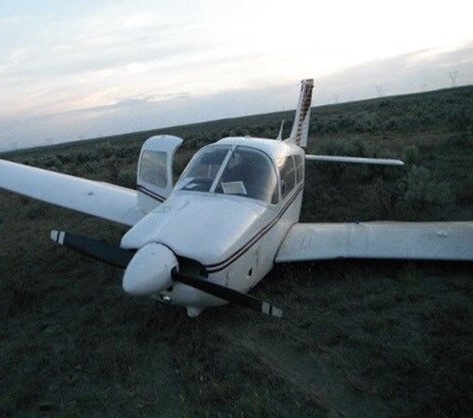
I know far too many people who have run an airplane out of fuel. I even know one person who has done it twice. I have no sympathy…
During a flight test, the candidate is expected to state the endurance based on the actual fuel load. I have been treated to such nonsense answers as “a couple of hours”, “plenty”, “between 2 and 3 hours”, and “I’m not really sure”.
The following method will keep you out of that club, impress your examiner, and keep you out of the trees.
Step one. If you don’t have one, make a calibrated dipstick (generic ones can be inaccurate). Park your airplane in cruise attitude. With a tailwheel airplane, you will need to put the tail up on something to approximate the cruise attitude. With an overextended nose oleo, or an extended fork with oversize nose tire, you may need to let some air out of the tire for this step. Put the fuel selector on one tank and drain all the fuel from that tank using the gascolator (not the wing drain). Unuseable fuel will remain in the system. Put the tail back on the ground if you had it elevated. Fuel the airplane using a digital meter, stopping at 5, 10, 15 gallons etc to mark the level on a stick. A wooden paint stick works fine. If your POH is in US gallons, then calibrate the stick in US gallons. Don’t use litres. (A company I know has various dipsticks for their fleet calibrated in gallons, litres or hours. This could lead to confusion, incorrect conversion and misfuelling.
This method does not work for Bellanca 8GCBC Scouts. Four interconnected tanks combined with no fuel selector make it impossible.
For aircraft with a simple on/off fuel valve, turn it off when making the dipstick to prevent cross-feed. You will also have to drain both tanks before filling one.
After you have made the dipstick, put it beside a ruler and take a picture of it. That will save you repeating the whole process when you lose your dipstick.
Step two. Calculate working endurance and down time. Using your calibrated dipstick, dip the tanks before flight. Subtract fuel for taxi, takeoff, climb and reserve (for a 172, this number is ~6 USGal), and contingency fuel as required. Divide the remainder by the cruise fuel flow from the POH. This will give you your endurance in hours. Convert it to hours and minutes, write it on a yellow sticky, and stick it on the panel right in front of you. (Don’t be afraid to add or subtract a correction to the POH fuel flow if your airplane is consistently over or under that figure.)
Then, when you record your takeoff time, add your calculated endurance to obtain your down time, and write it on the sticky. Label it “down time”. That is the time you will start cutting into your reserve.
Have a digital fuel flow gauge? Use this method anyway. Those things can fail. If I saw a discrepancy, I would trust this method over a digital gauge.
With this method, you will be able to see a low fuel situation coming hours in advance (from the moment of takeoff, actually), and will be able to make a timely decision to divert. Will never be caught by surprise.
